Waste and recycling tracking
I try hard to minimise my environmental impact, but without being aware of the effect daily decisions have, it can be a challenge. Since moving to Finland I've become much more conscious of exactly how much energy I use, how much stuff I consume, the possessions I accumulate and how much waste all this activity produces.
Partly this is a result of me living in a one-person flat, and partly because since August 2019 I've been keeping an accurate record of how much waste I generate. Where I live in Tampere there are bins for six types of waste: paper, card, glass, metal, compost and general. Everything except the last of these is supposed to be recycled. Finland also has an exemplary network of financially-incentivised bottle and can returns. So each fortnight I find myself splitting waste into eight different categories. It's already effort, so taking weight measurements as well isn't a big deal.
This page covers the year up to my most recent readings. For older data, select on one of the links in the summary table.
| Year | Average daily output | Annual output | More info |
|---|---|---|---|
| 2019 | 339.53 g | 124 kg | 2019 graphs |
| 2020 | 154.98 g | 57 kg | 2020 graphs |
| 2021 | 119.88 g | 44 kg | 2021 graphs |
| 2022 | 122.93 g | 45 kg | 2022 graphs |
| All data | As of 01/2023: 155.81 g | As of 01/2023: 57 kg | Graphs of the complete dataset |
For comparison, in 2019 per capita annual household waste was 566 kg in Finland and 502 kg across the EU. See eurostat for other countries and years.
The following histocurve shows my daily waste output for this year based on data I collect each bin cycle roughly once per fortnight. The area under the graph represents my total waste output. Click on the graphs for larger versions.
Some brief points to note about the graph:
- Green categories are recycled by the council; general waste in red isn't recycled.
- This is output for a single person.
- Data points correspond to when I do the bins, roughtly fortnightly.
- For info about how the graphs are generated, see my Graphs of Waste posts on the topic.
- The script used to generate the graphs can be found on GitHub.
To view histograms showing the actual values recorded for each of the waste types, select one of the graphs below. Be aware that they all have different scales on the y-axis, so they're not visually comparable.
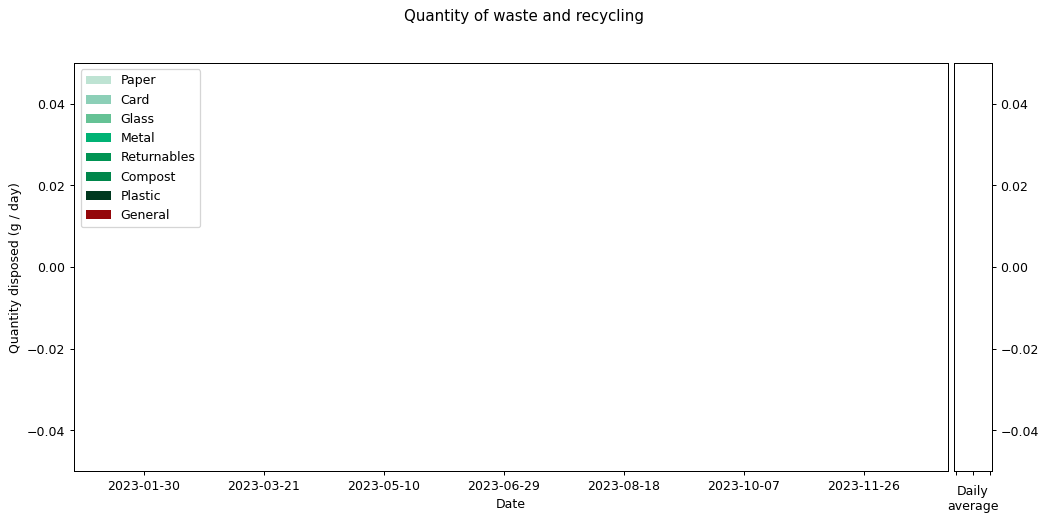
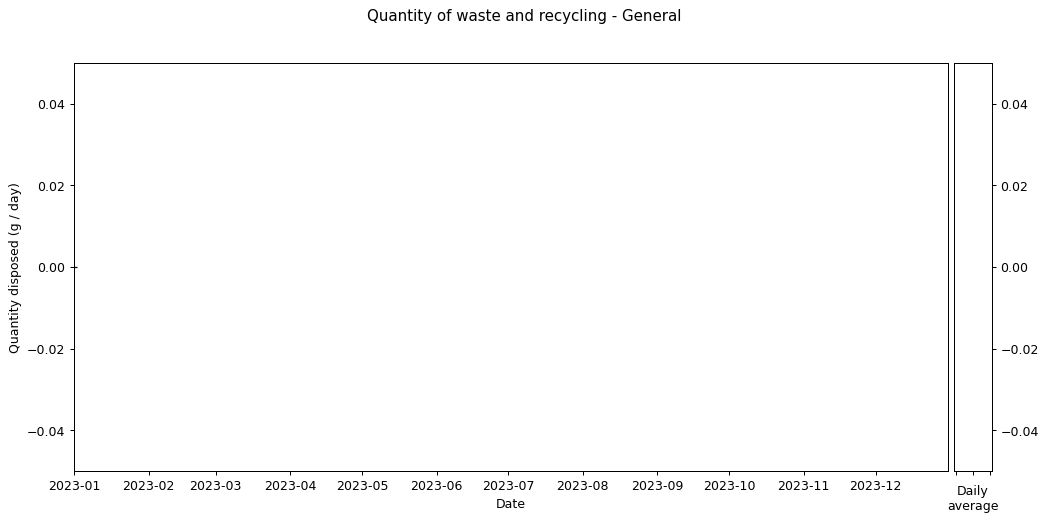
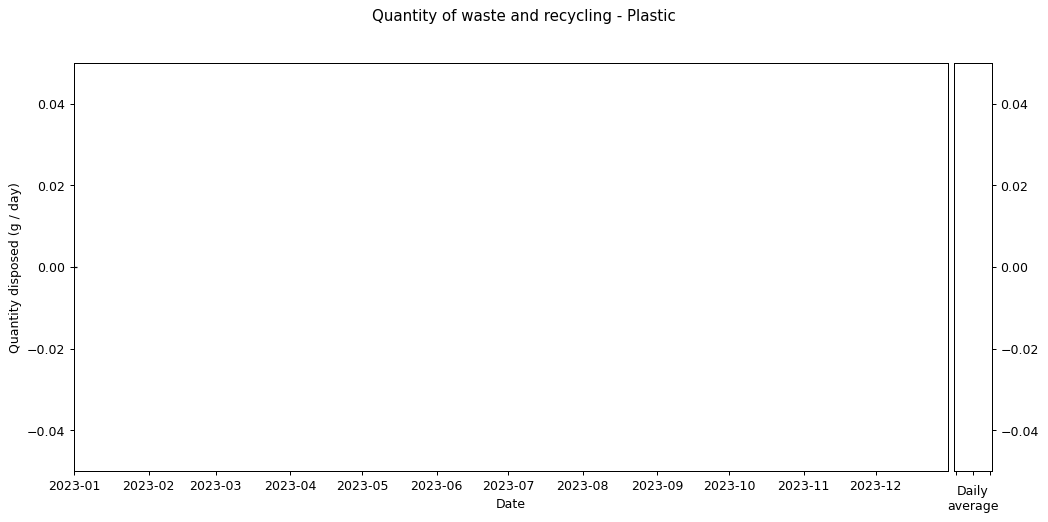
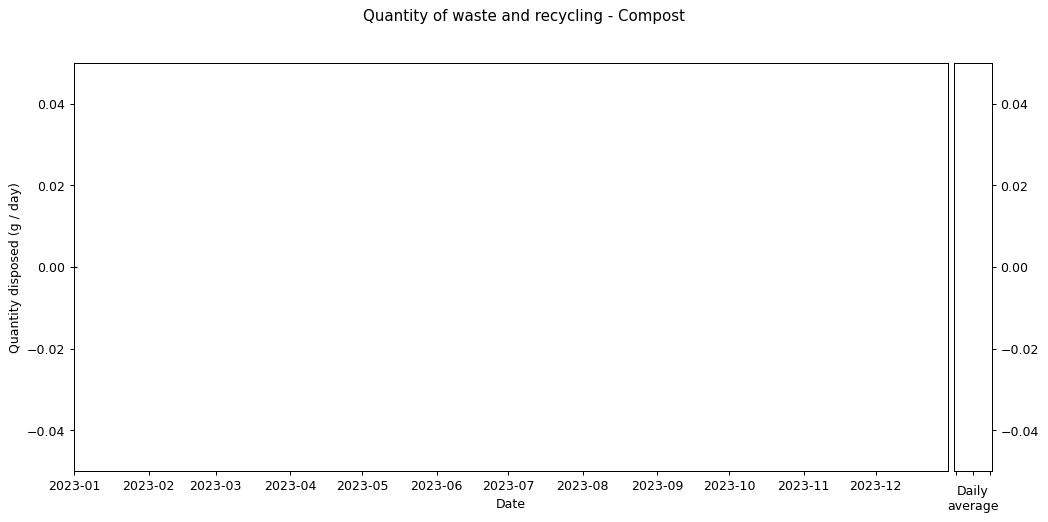
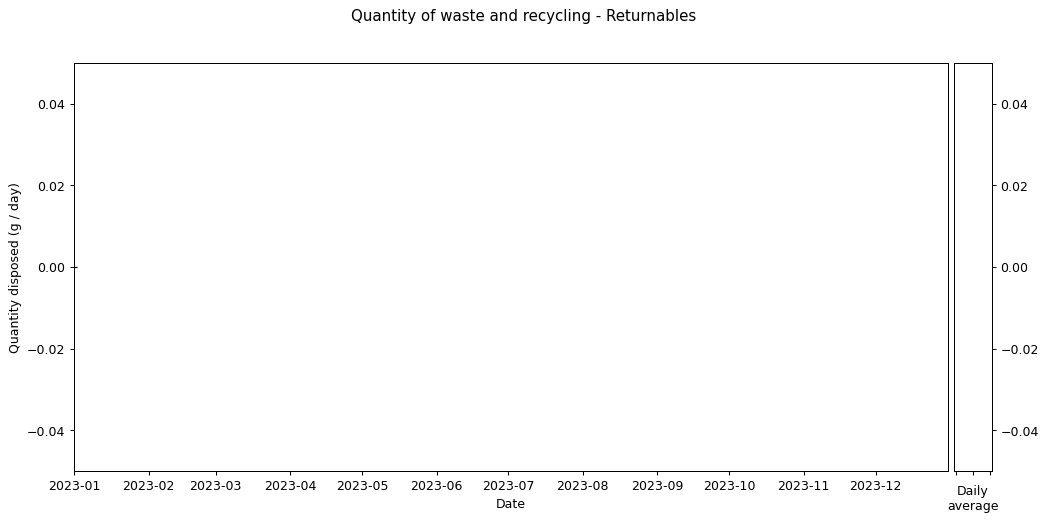
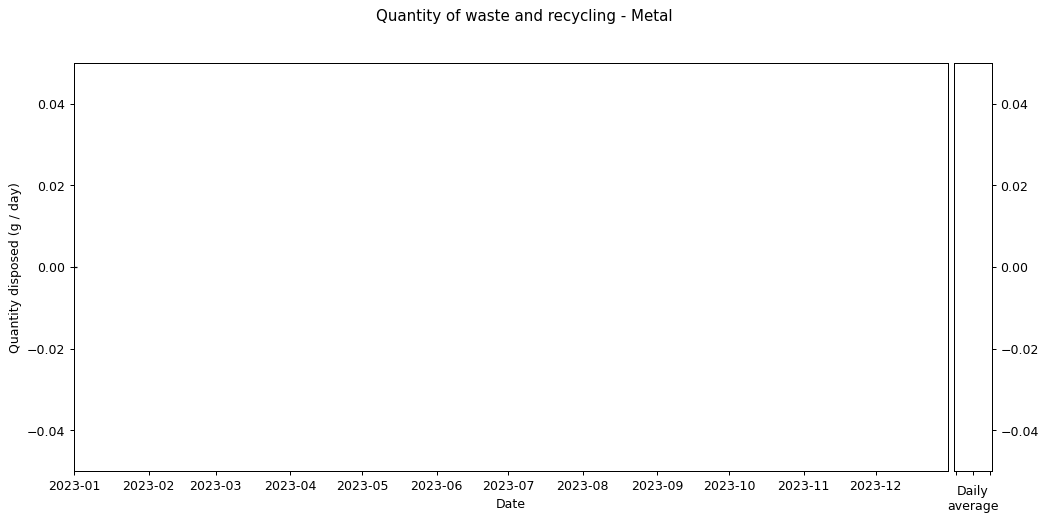
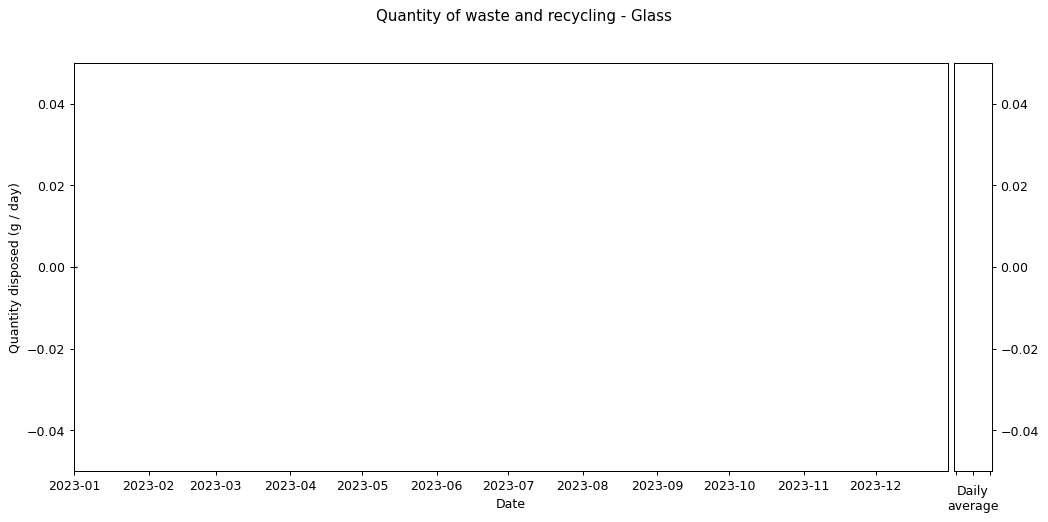
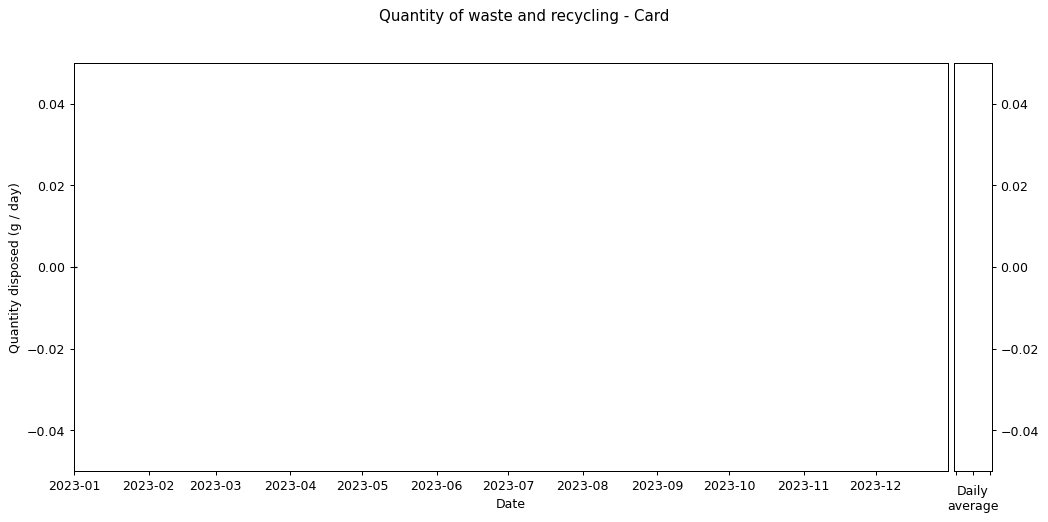
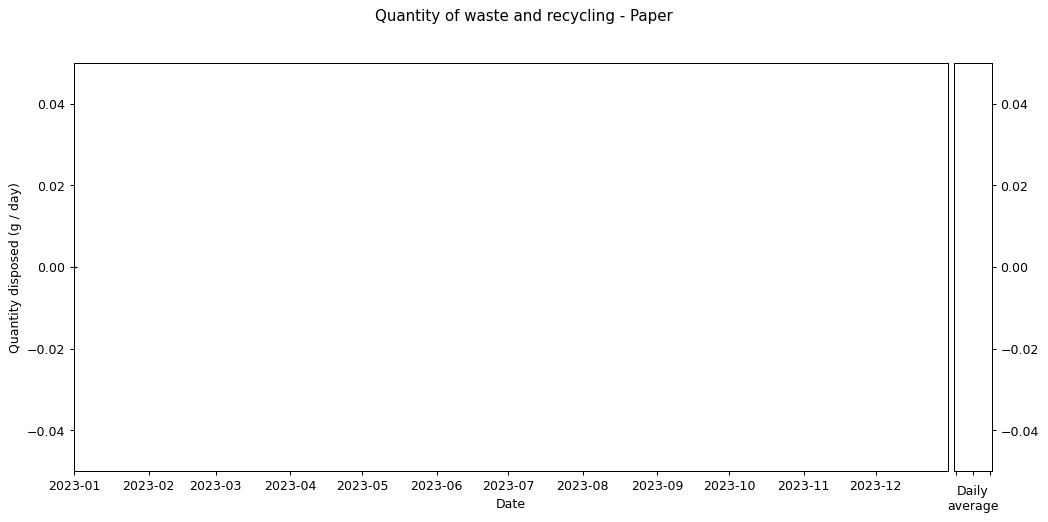
Comments
Uncover Disqus comments